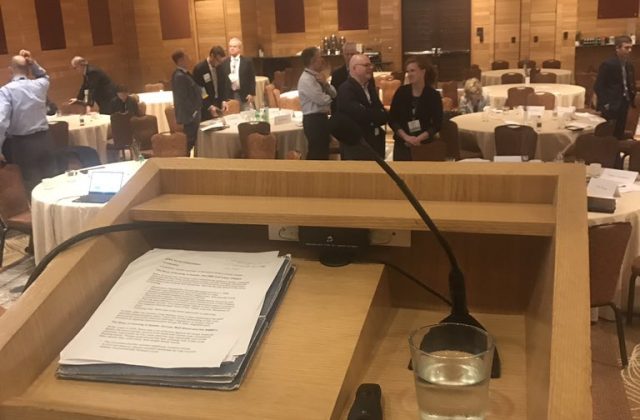ULI Presentation: The State of the Housing Debate in Seattle
Last week I was invited to address the Council on Small Scale Development Council at the Urban Land Institute’s Spring meeting held here in Seattle. I don’t like Power Point presentations. In general, I feel like what’s happening on the screen distracts from what’s being said, and what’s being said can distract from the slides. On the other hand, it’s a powerful tool in some settings. My slides are minimal here so I’ve included my talking notes at the bottom. My message to the group was simply this: Seattle is about to drive off a cliff with Mandatory Inclusionary Zoning that will send us into a spiral of higher housing prices, more restrictive regulation inspired by those prices, and more higher prices. Before this I gave a 25 year history of growth and how we’ve dealt with it up until now.
Notes for ULI Presentation
Introduction
I’ll introduce myself, and then I’ll talk about Smart Growth Seattle.
The Story of Housing in Seattle: The GMA and Urban Villages
Many of us got into all things urban because we believed dense, walkable cities are the best thing we’ve got to counter climate change, prevent the degradation of the environment, have a vibrant economy and even learn more about other people and ourselves. Now all we talk about is the price of housing.
- Washington Passed the Growth Management Act in 1989
- The plan was designed to put more growth in cities
- Seattle’s approach was an Urban Village plan, with growth being poured into areas already zoned for density
- This was the original “Grand Bargain;” single-family would be left untouched in exchange for growth and infrastructure in the villages.
- The City also offered a lot of staff support and there were numerous committees, groups, and stewardship efforts in the neighborhoods.
- This balance held through most of the 1990s until the recession of 2001
- Following that, there was a top down approach to planning.
In 2001, after the election Greg Nickles more or less disbanded the staff and the implementation effort. I liken this to the disbanding of the Iraqi army at the end of the Second Gulf War; neighbors no longer had a structure to organize around positive things for their neighborhood.
The Story of Housing in Seattle: Occupy Wall Street and the NIMBYs
At the crash in 2008, there was a lot of foment against all things financial. Banks, the stock market, anyone who dealt with money was considered criminally responsible for the crash, and this was especially true of the housing sector. People experienced the fear of losing one of the most basic assets they could have, their single-family house.
- The Occupiers and the worried neighbors combine forces
- In 2013 an obscure, openly socialist candidate for City Council defeats Councilmember Richard Conlin
- The Council begins a leftward lurch driven largely by neighbors angry and worried about new development, the extreme left leaning supporter of Councilmember Sawant, and those worried about the rising price of housing.
- Together this coalition has created an environment in which interventions in the housing market must be punitive: developers much “pay their fair share” for creating so much housing and commercial space.
- Along with numerous other supply killing initiatives, the centerpiece of the effort to Make Housing Affordable Again is Mandatory Inclusionary Zoning, an infeasible, inflationary and, in the end, illegal program of mandated rent restricted housing or fees in lieu.
- This effort was driven largely by non-profit housing developers who want access to more capital to build units
The Story of Housing in Seattle Today: Units! Units! Units!
In Seattle today the solution to rising prices is to squeeze cash out of the production of market rate housing to build thousands of subsidized units. What’s ironic about this, obviously, is that this won’t do anything beneficial to upward price pressures. On the contrary, this, along with other limitations on production, is a recipe for higher prices, which will lead to more unhelpful intervention.
What’s the Better Solution? More Housing! And Smarter Subsidies
The market can produce an enormous number of market rate units with good incentives. Also, with broad and wide taxation, especially of land inefficiency (think of 5000 or 7200 square foot lots with two people on them) we could also generate money for subsidies that should take the form of direct cash payments or tax abatement for rent restrictions in some as a voluntary incentive program.


